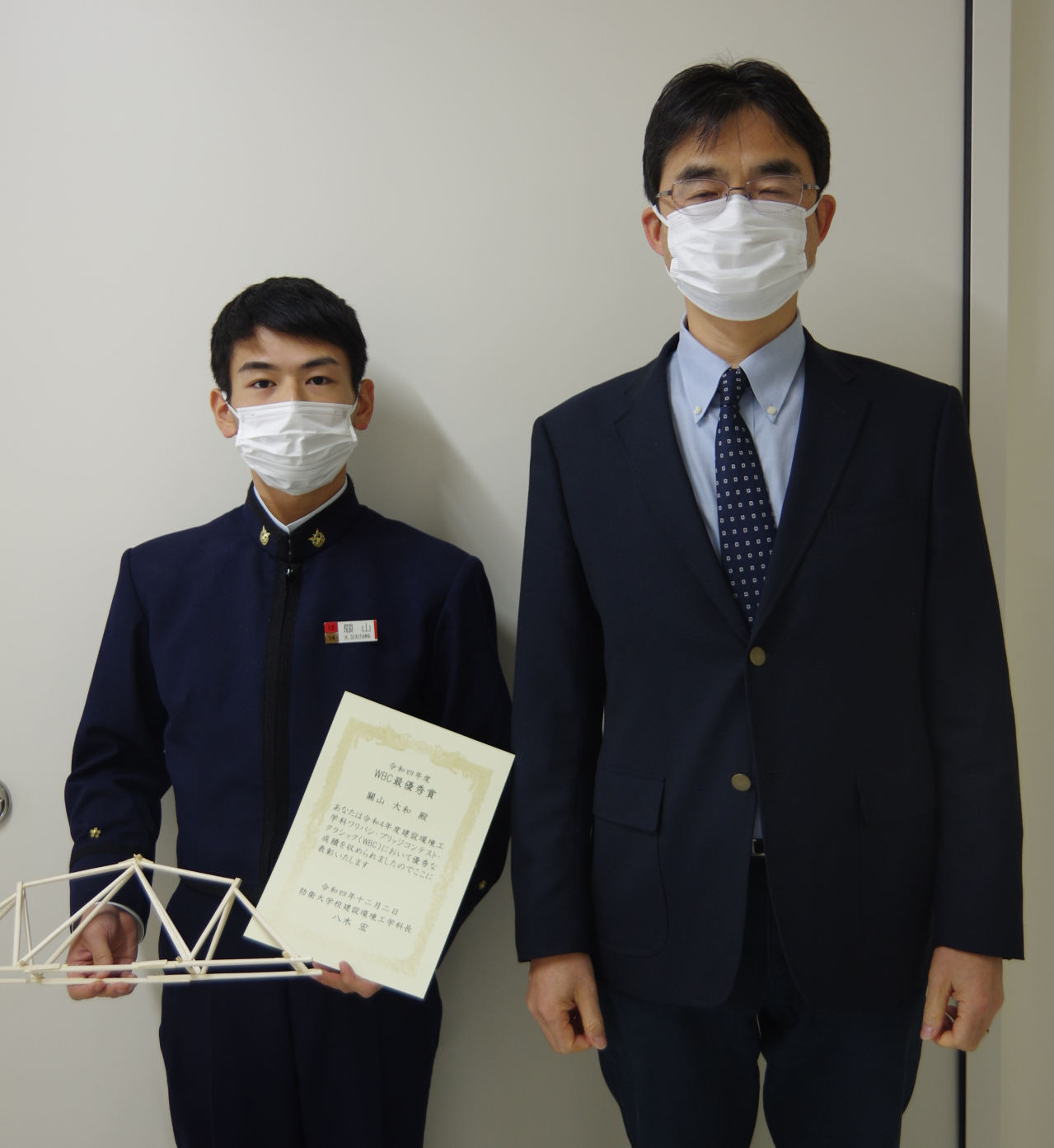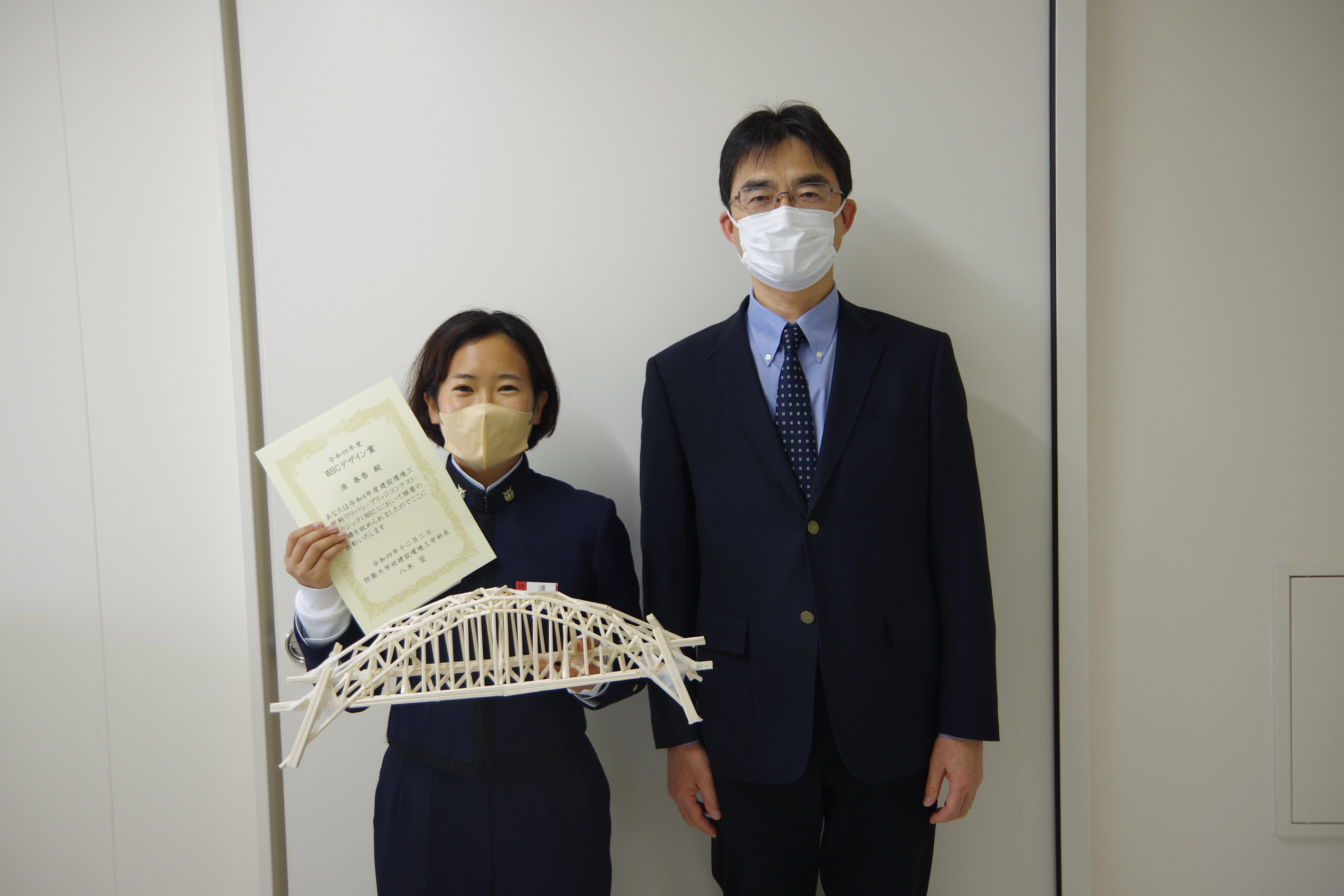Factory Tour
Factory Tour
In the Department of Civil and Environmental Engineering, to make each student understand the application of classroom or laboratory knowledge the real world, difficulties faced in the real world, and the technological and academic advancements required, we place a significant importance on factory tours. We are No. 1 among the 14 departments of the National Defense Academy. We conduct factory tours for approximately 8–9 days in total, and we sometimes visit two places in a day.
A scene of the tour
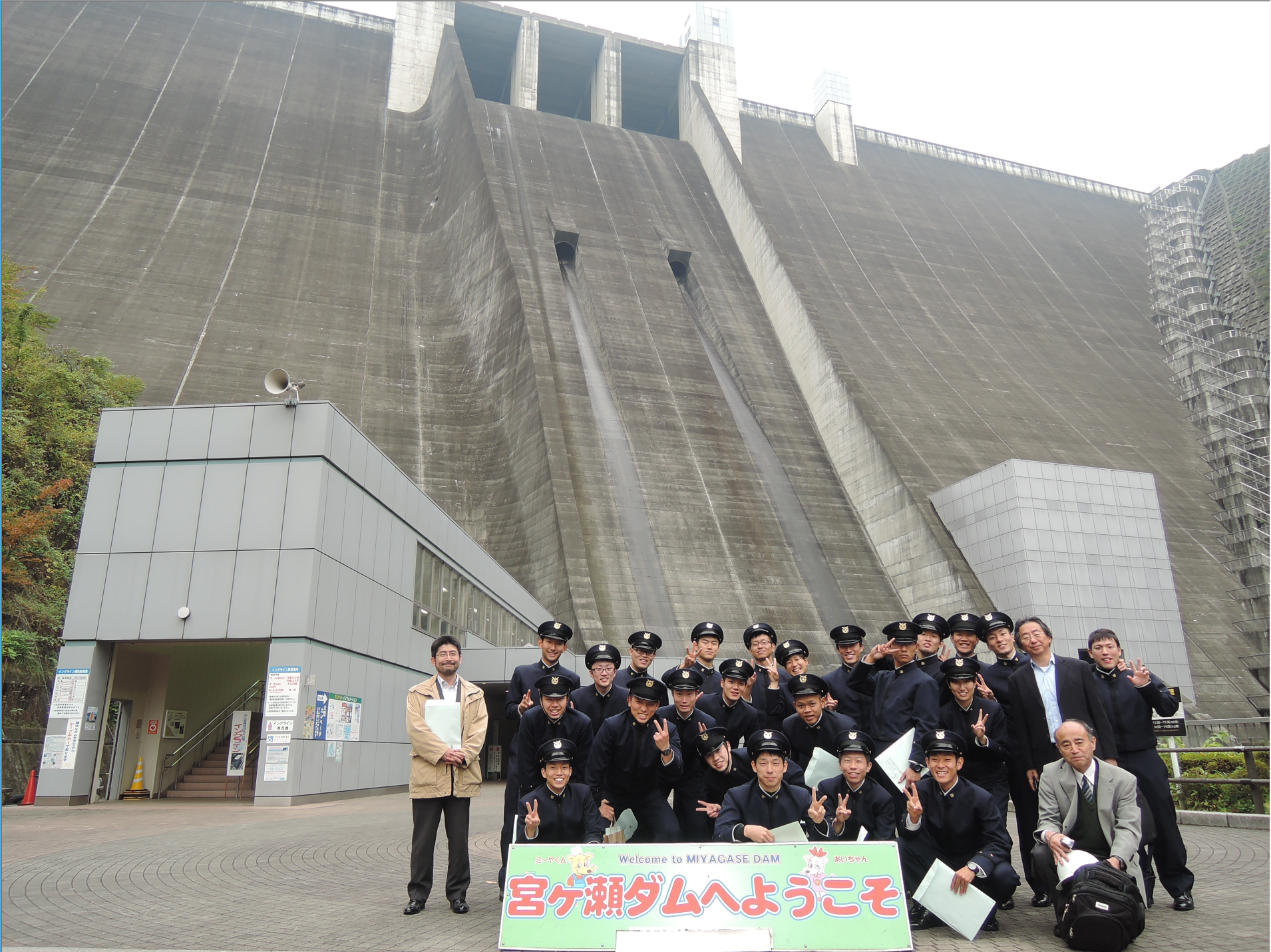
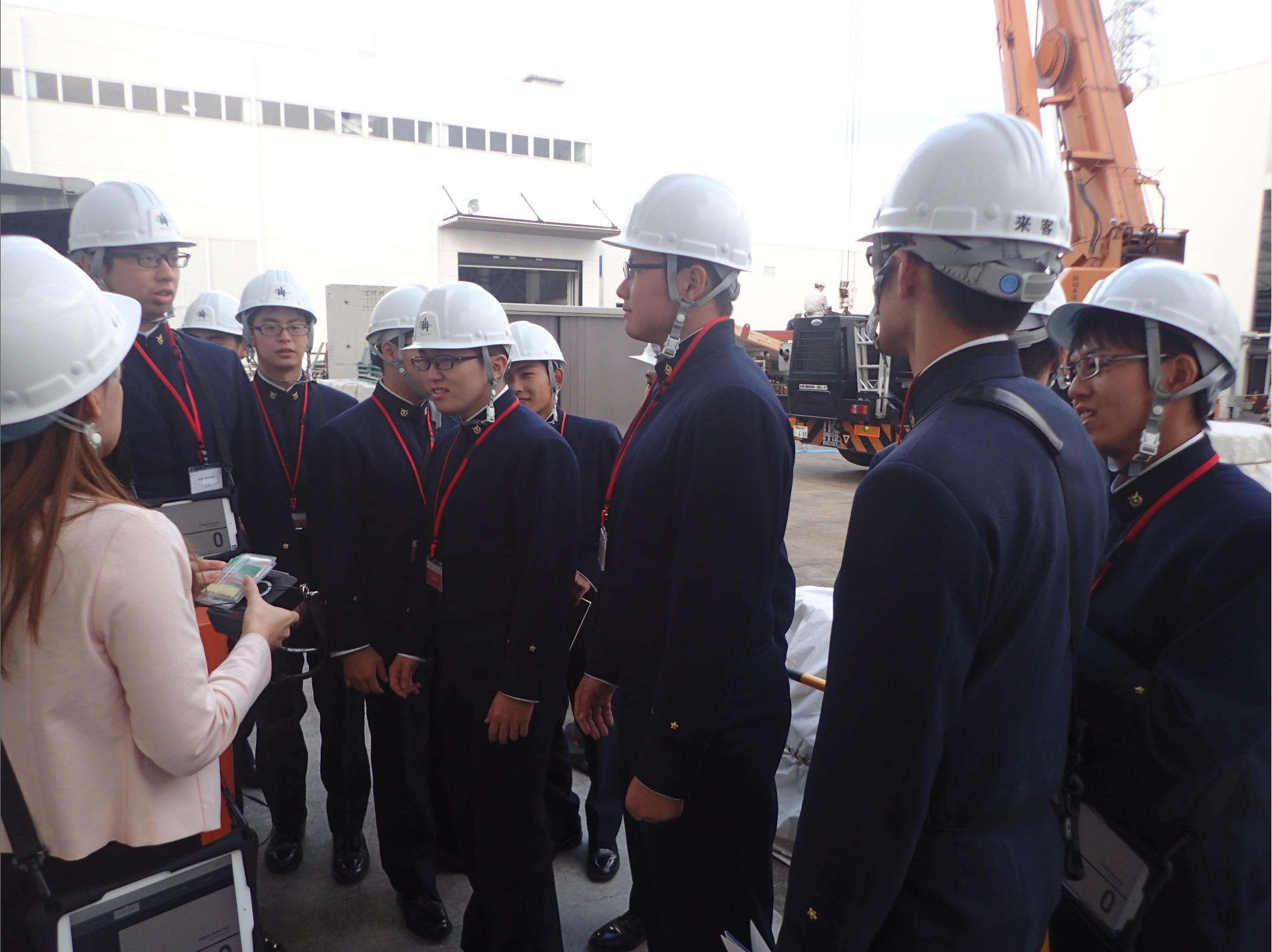
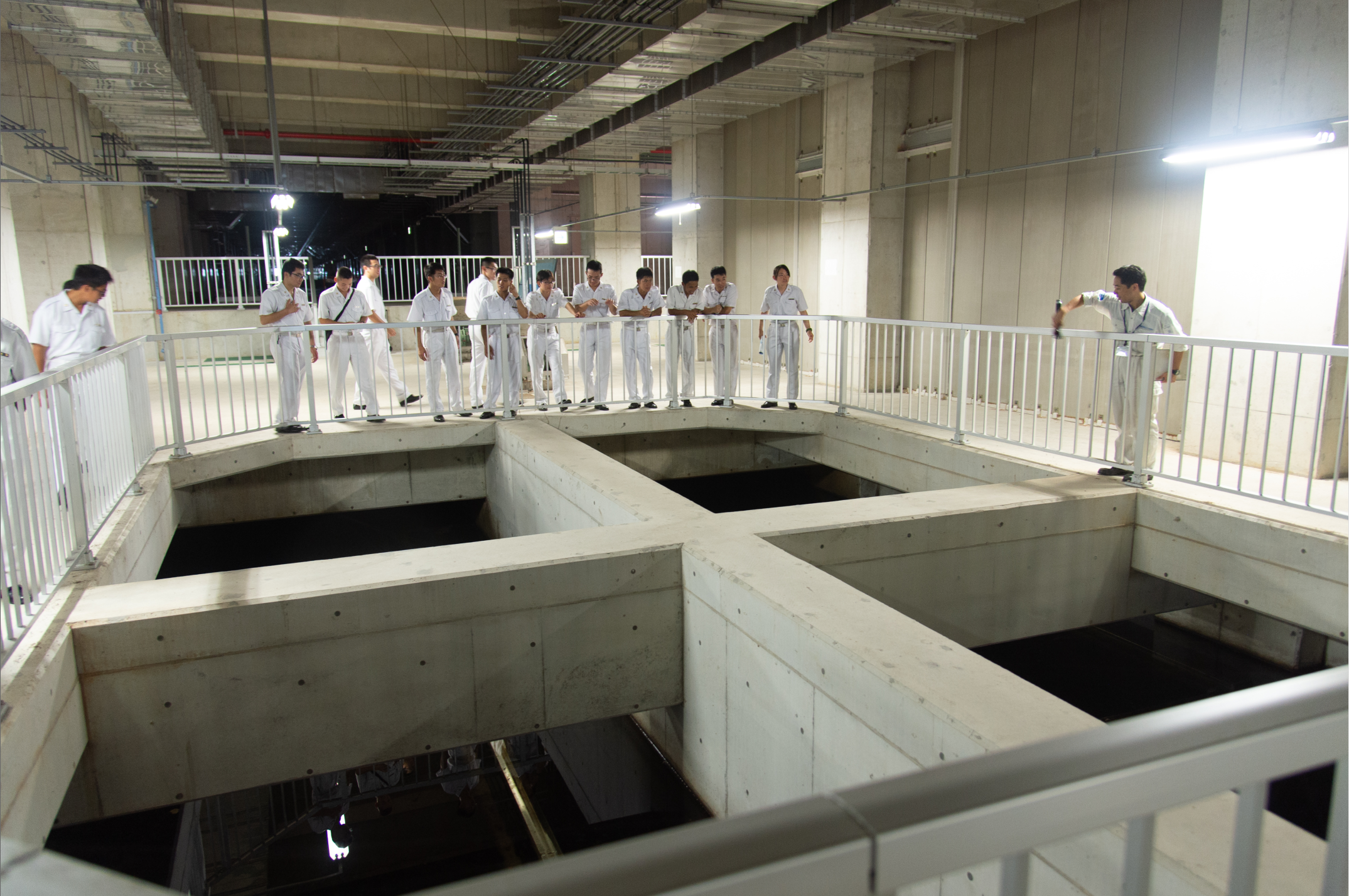
Shitamachi Purification Center
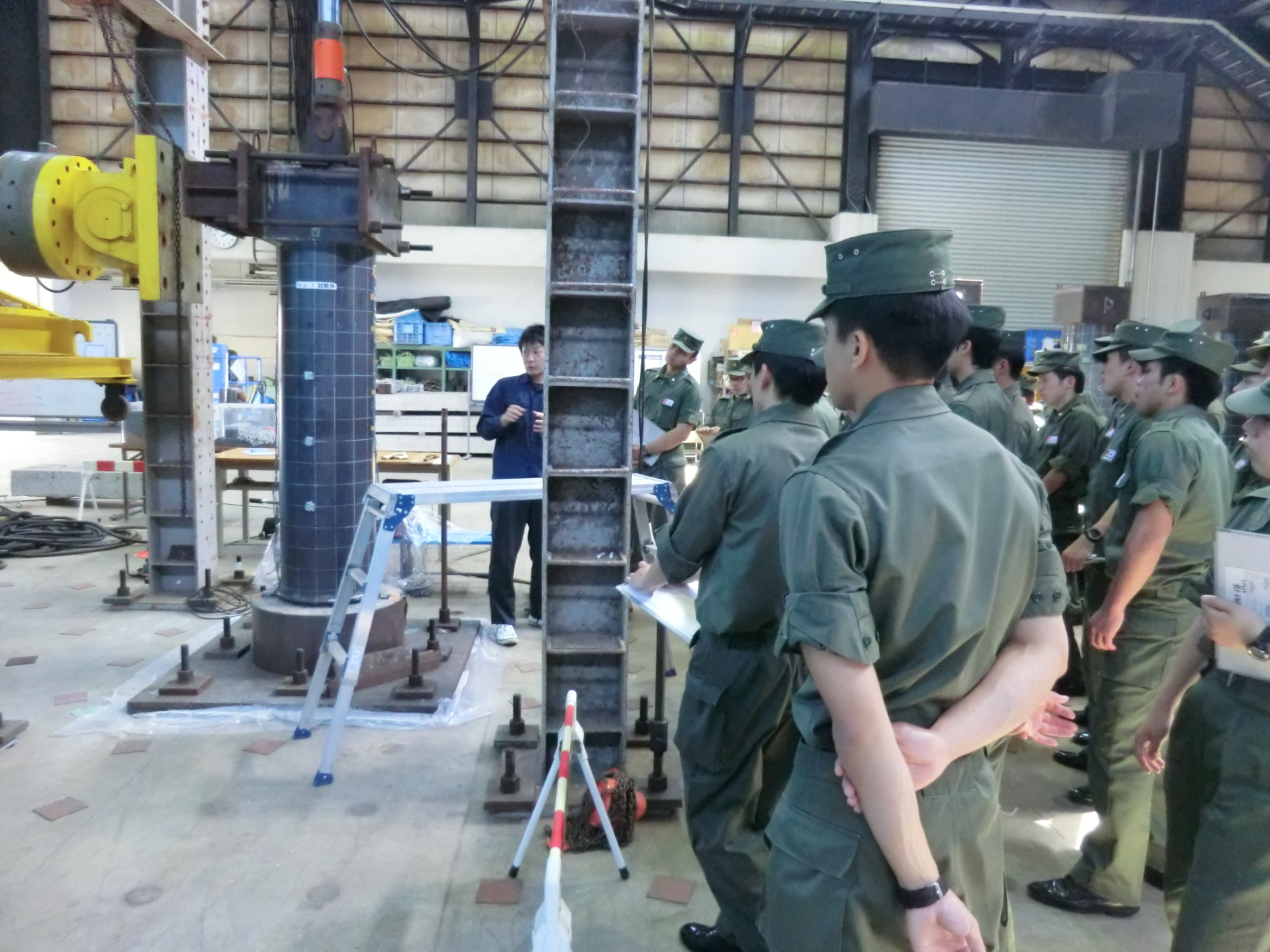
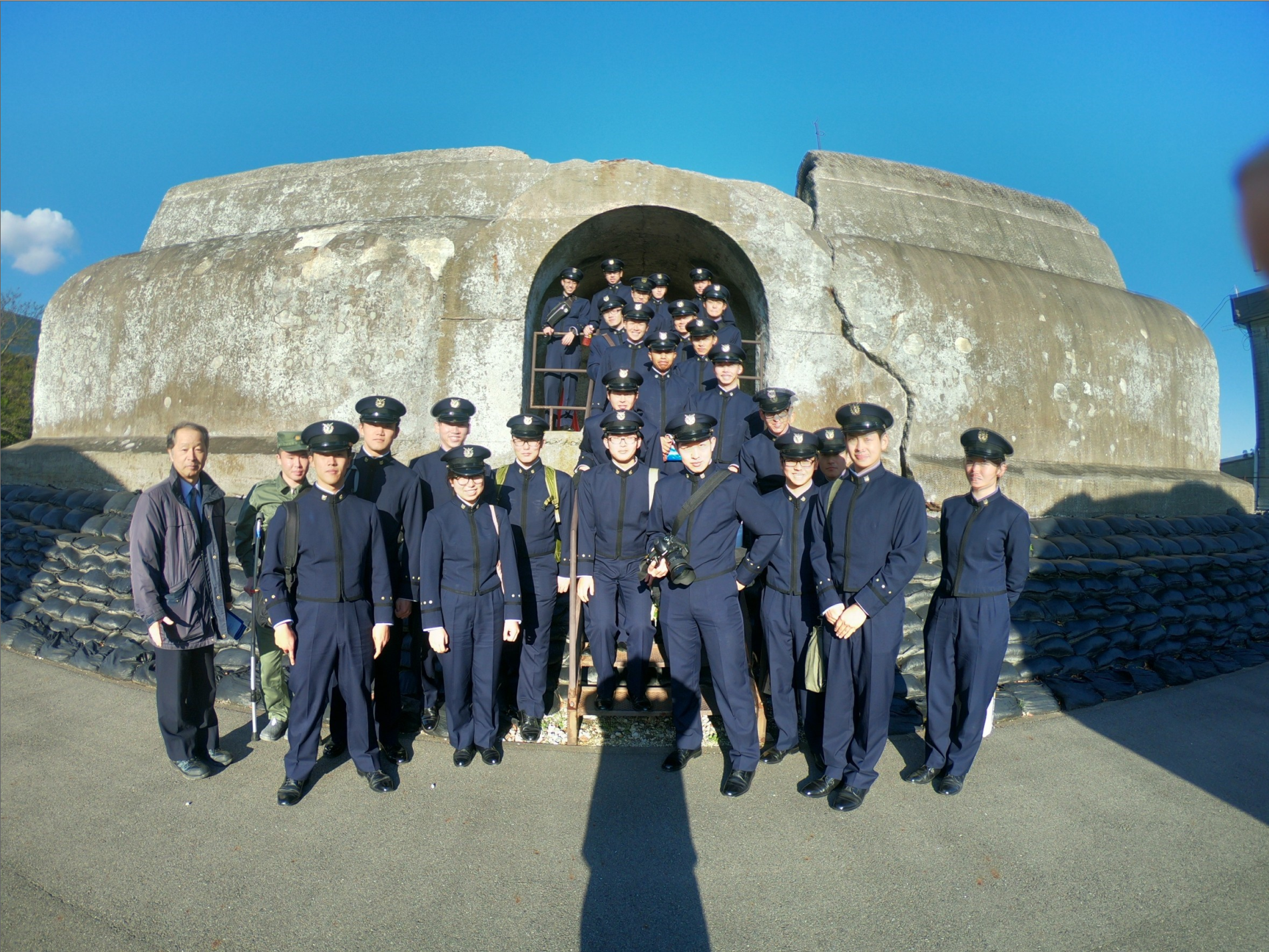
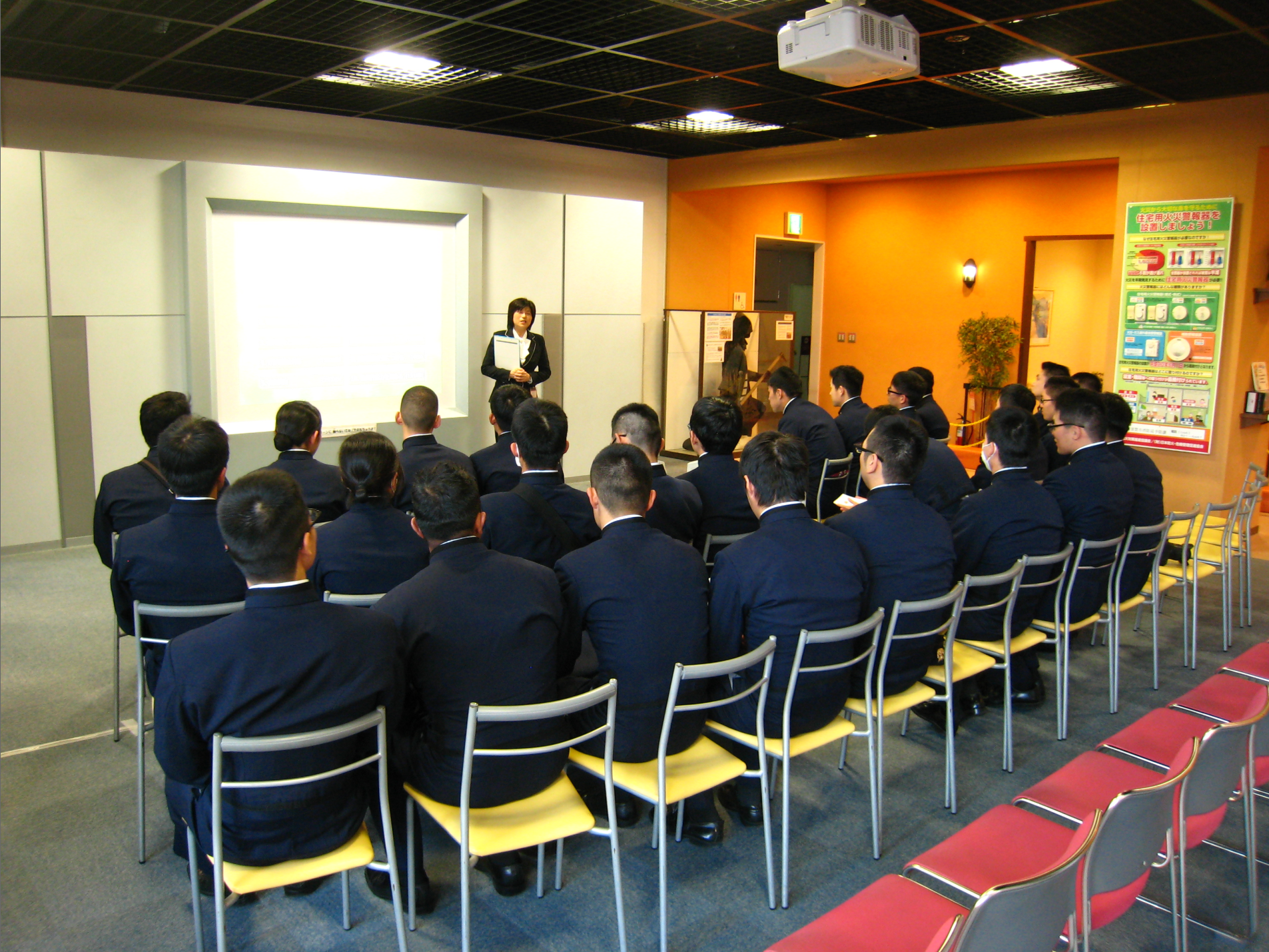
Tour destinations for the current year
| Period | Scheduled tour destination | Purpose and contents of the tour |
|---|---|---|
| 3rd Year | Miyagase Dam | To learn about the process of planning and constructing gravity-type concrete dams, as well as the maintenance, management, disaster prevention, and water resource utilization of the wide area hydrosphere |
| To be desided | To be desided | |
| 4th Year | To be desided | To be desided |
Past results
| Period | Tour destination | Main contents of the tour |
|---|---|---|
| 3rd Year | JFE Keihin Steel Works | Process of manufacturing products from steel, which is a major civil engineering and construction material (Raw material processing → iron making → steel making → rolling) |
| JERA Higashi Ogishima Thermal Power Station | Liquified natural gas (LNG) receiving base station, storage tank, and power generation equipment at the LNG--fueled thermal power plant | |
| DC Co., Ltd., Cement Business Headquarters, Kawasaki Factory | Manufacturing process of cement, which is a major civil engineering and construction material | |
| Mitsubishi Heavy Industries Yokohama Plant | Process of manufacturing bridge girders and piers using steel materials | |
| Yokohama Circular Railway Takata Station Construction Work | Civil engineering construction work in underground spaces such as subway extension and station maintenance | |
| Miyagase Dam | Internal and management system of a multipurpose dam that has the functions of irrigation, flood control, and power generation | |
| Akashi-Kaikyo Bridge Central Army Headquarters |
The Central Army Headquarters at the Akashi-Kaikyo Bridge (Kobe-Awaji Island), which is the longest suspension bridge in the world, we shared our experiences and lessons learned from the relief activities of the Self-Defense Forces during the Great Hanshin-Awaji Earthquake. | |
| Taisei Corporation – Technology Center | To visit the research facilities of Taisei Corporation and learn about the latest technological developments and construction technologies | |
| 4th year | Shinjuku Terminal South Gate Area Infrastructure Development Project | Urban civil engineering works such as the replacement of the dilapidated Shinjuku overpass (National Highway No. 20) and maintenance of pedestrian plazas |
| Metropolitan Expressway Traffic Control Room | Collecting, processing, and providing information on accidents and traffic jams across all highways by fully harnessing the traffic control system (vehicle detectors, television cameras, etc.) | |
| Yokosuka City Waterworks Bureau West Purification Center | Sewerage purification facility, which an important social infrastructure | Yokosuka City Waterworks and Sewerage Bureau – Shitamachi Purification Center | To learn about the functions and latest technologies of sewerage treatment facilities, which is an important infrastructure |
| Port and Airport Research Institute | To visit Japan’s largest civil engineering experimental facility for the construction and maintenance of ports and airports, and learn about its latest technologies | |
| Recycle Plaza Aicle | To learn about the current state of waste disposal in Yokosuka City, as well as countermeasures | |
| Tokyo Bay Third Naval Fort Remnants | To learn about the performance and preservation status of the civil engineering structures of the Meiji era | |
| Yokosuka City Disaster Prevention Center | To understand the current status of Yokosuka City’s emergency response in the event of an emergency or disaster, and to learn about its current status of cooperation with the Self-Defense Forces, including the current state of seismic isolation and damping structures against earthquakes |
Waribashi Bridge-contest Classic
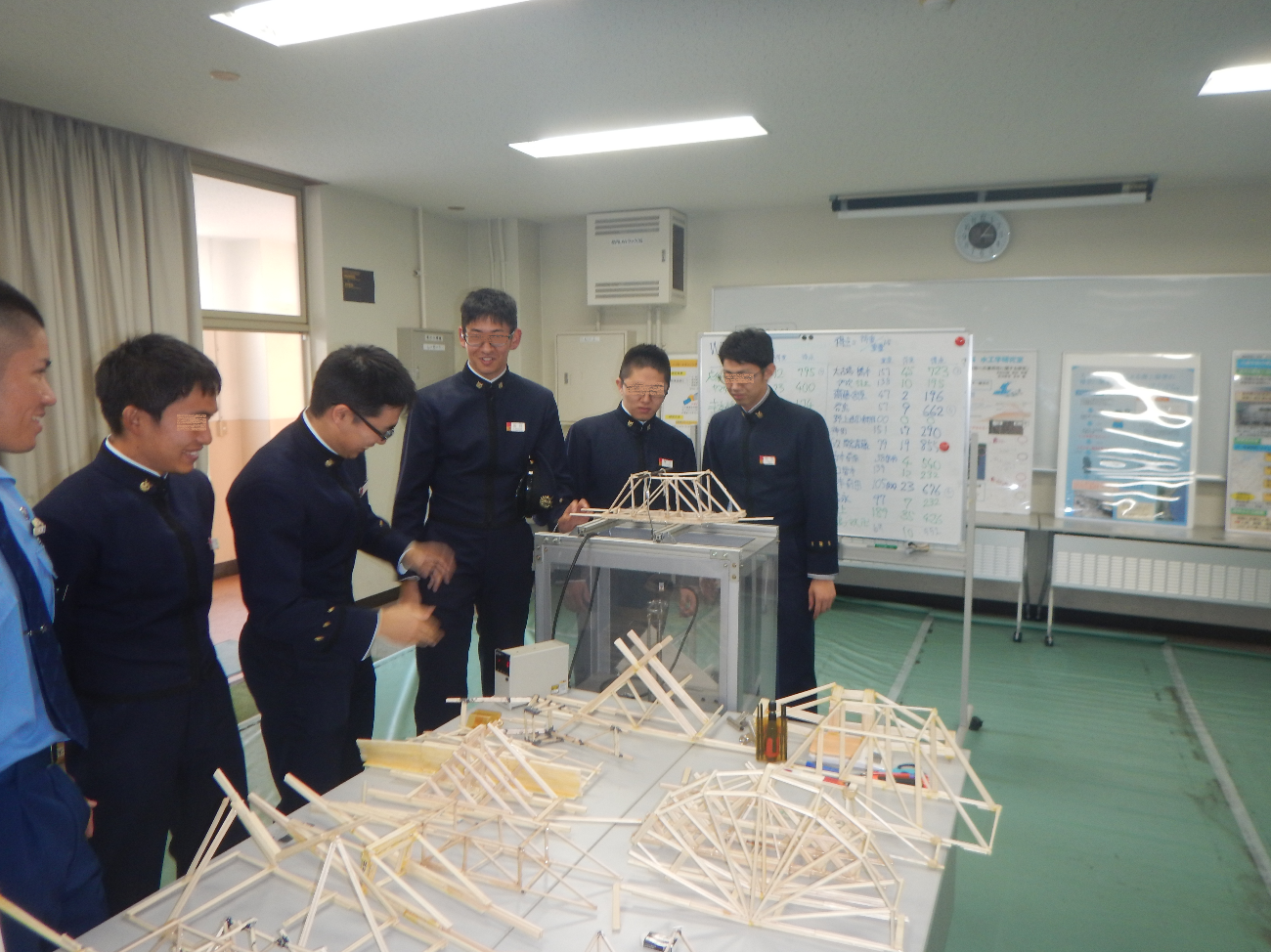
In the Waribashi Bridge contest classic, students create the model of a bridge under certain constraints, using disposable chopsticks, and compete on the strength of their bridges. As an opportunity for the 4th year students of our department to demonstrate the results of their daily study in the field of structural engineering, this competition is held during the department tour for the 1st year students (*).
(*) At the National Defense Academy, a department tour is held for the 1st year students to help them select a department when advancing to the 2nd year.
Official competition rules (revised in November 2018)
- General regulations regarding specimens
- The length of the specimen should be sufficiently long to be placed on a bearing with a spacing of 450 mm. The width should not exceed 200 mm.
- Structural forms that generate horizontal reaction force (for example, arches) are prohibited.
- Regulations regarding the materials used
- Use the prescribed disposable chopsticks distributed
- The maximum number of chopstick sets that can be used per specimen is 50
- There are no restrictions on the type of adhesive that can be used
- Regulations on the loading method
- The loading span (bearing interval) must be 450 mm.
- The loading position must be equidistant from both bearings. Furthermore, the position must be 70 mm or more above from the bearing.
- As illustrated in the figure below, an iron rod is passed through, in a direction perpendicular to the bridge axis, and loading is performed by pulling down the iron rod with a wire rope. In the figure on the right, the horizontal bar is passed into the upper chord member. However, the position where the horizontal bar is inserted may be specified by the manufacturer. Even in such cases, the provisions of 3.2 must be satisfied.
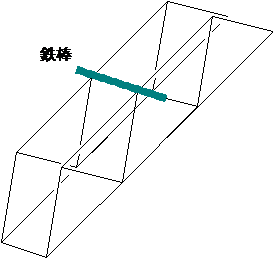
- Method of judging the competition
- The specimen that has a higher value of Ω, as calculated below, is judged superior.
Ω=Pmax/W1.5
Here, Pmax and W represent the maximum load (kgf) and mass (kg) of the specimen, respectively.
- The specimen that has a higher value of Ω, as calculated below, is judged superior.
Scenes from the competition
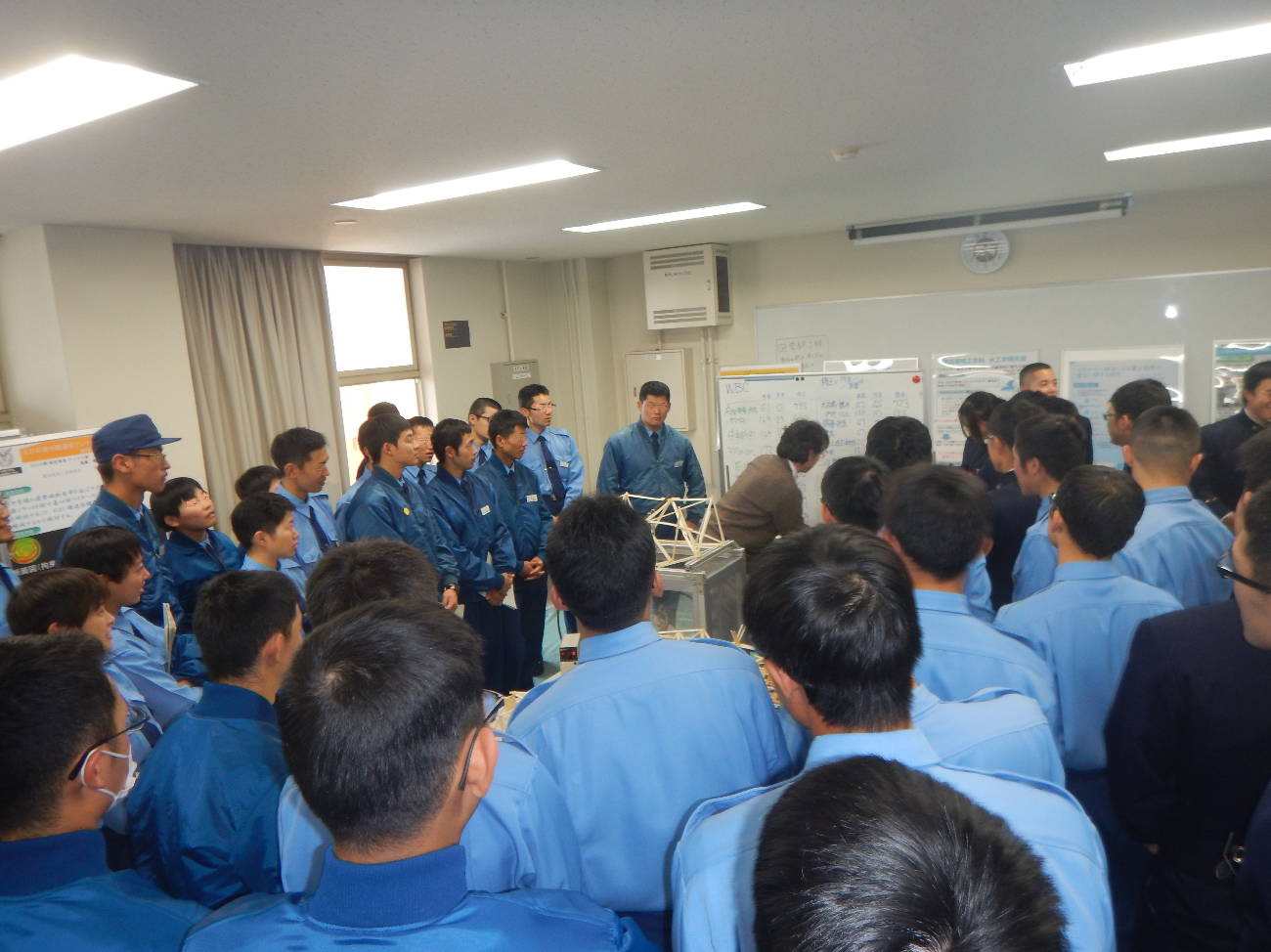
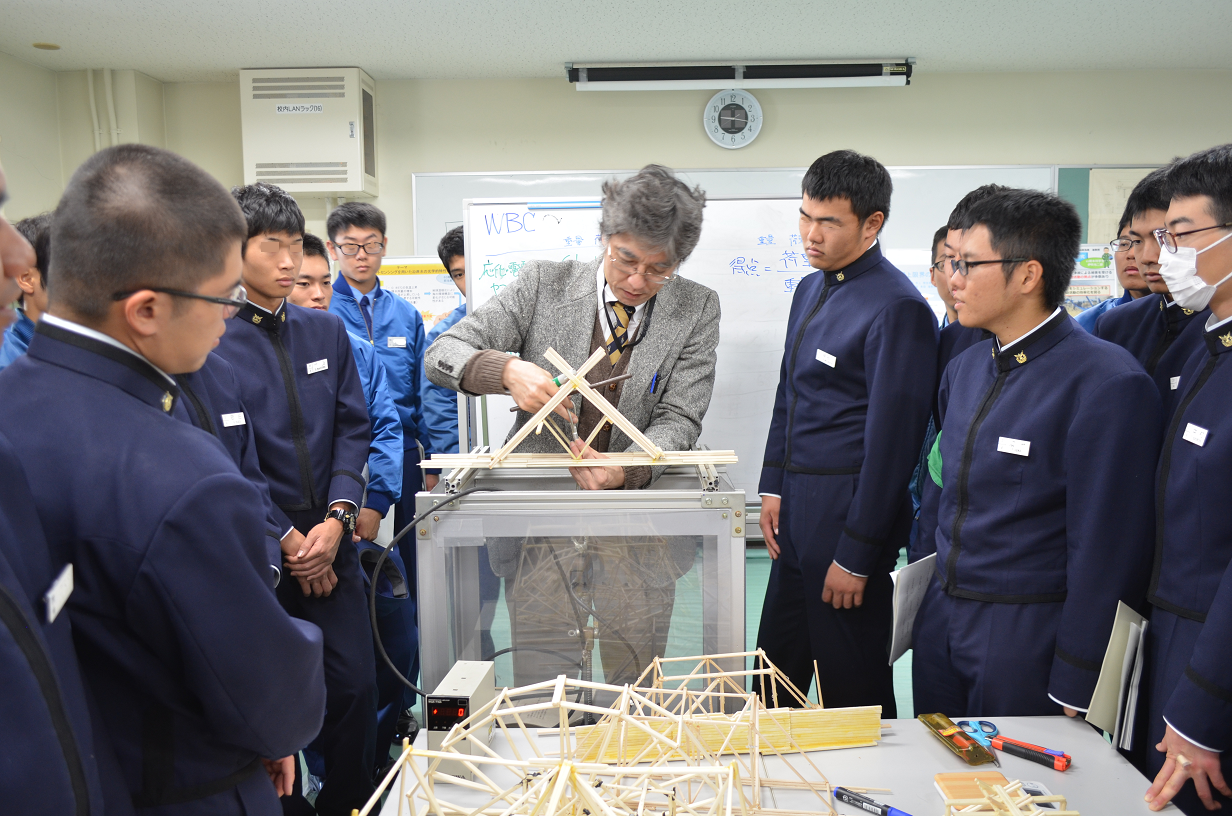
Prize winner of 2022 competition
